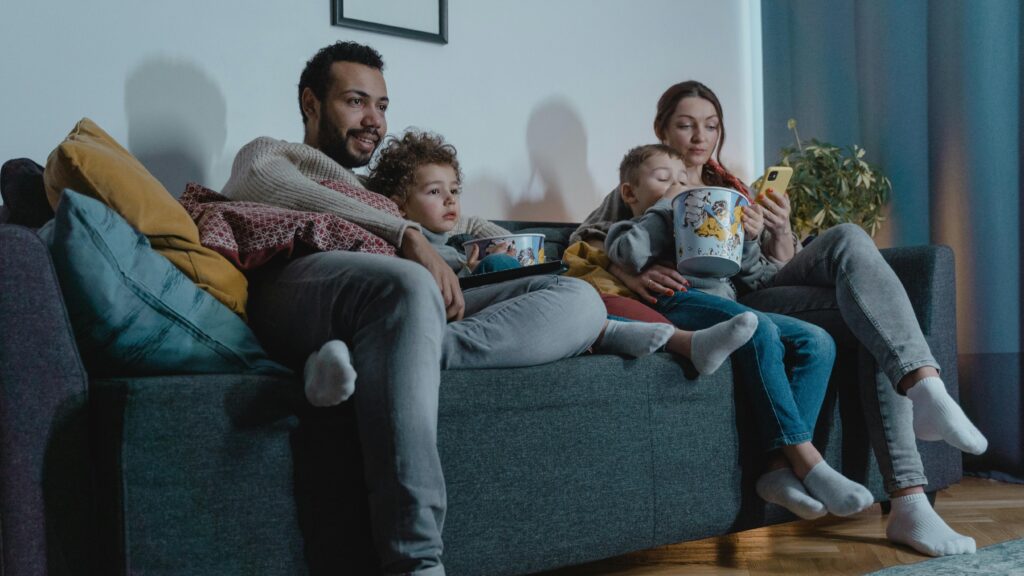In July’s edition of Toy World Magazine, Charlie Brownless, our Head of Toys & Entertainment EMEA, was invited to contribute an opinion piece on the opportunities of adopting a Connected TV strategy and how, alongside the benefits, also come responsibilities concerning kids’ data privacy. Charlie has expanded his insights on this complex topic, which are shared below. You can check out the full edition of Toy World Magazine here and learn more about Toy World by heading to their excellent website here.
We all know that linear TV’s golden age of reach is over – and for toy brands, Connected TV (CTV) now fills the gap as a go-to channel for engaging family audiences at scale. CTV offers a blend of reach, flexibility, and performance – which makes it feel like an obvious win. But as the channel has evolved, so too has its complexity.
Today’s CTV ecosystem is a fragmented patchwork of platforms, formats, and providers. From YouTube CTV to FAST channels, AVOD, BVOD, SVOD, and more, marketers face a dizzying array of options – each with different rules, capabilities, and routes to market. Add the strict data privacy restrictions like the General Data Protection Regulation (GDPR-K) and the Children’s Online Privacy Protection Act (COPPA), that apply to kid and teen advertising, and what seems like a straightforward opportunity becomes a potential minefield.
Nowhere is this tension more evident than in the growing scrutiny over data practices on CTV. The recent Roku class action lawsuit in the US has brought this issue into sharp focus. The key takeaway? Even when content is labelled or targeted as “family,” privacy laws like COPPA may still apply if the content is deemed to be “child-directed,” COPPA applies regardless of whether an adult owns or is logged into the device. In practice, this means that even if your media plan is set to reach “families,” if the content it appears on appeals primarily to children under 13 – as most do – then privacy laws still apply, and personal data collection must be disabled.

This is a critical and often misunderstood point: under COPPA, it’s the nature of the content — not the age of the logged-in viewer, the household composition, or the targeting label – that determines whether privacy protections are required. If the content is animated, features toys or beloved characters, or uses kid-friendly language and visuals, then it likely qualifies as child-directed. In that case, even the most well-meaning co-viewing strategy needs to be executed with strict data privacy safeguards in place.
This isn’t just a U.S. principle either. The UK’s Advertising Standards Authority (ASA) has taken a similar approach. In a recent ASA ruling against Kerry Foods, the ASA found that an ad – despite being restricted to logged-in adult users – breached child-targeting rules because its content, including cartoon visuals and a Garfield promotion, was likely to appeal to under-12s. The ASA made clear that audience targeting controls don’t override the obligation to assess how content may be perceived by children. Reinforcing a consistent regulatory message across jurisdictions – when content is likely to appeal to children, advertisers must meet the standards that apply to child-directed advertising – regardless of the intended or targeted audience.
SuperAwesome’s Chief Privacy Officer and Head of Legal, Amy Lawrence, put it best in a recent blog post when she said: “For everyone participating in buying and selling CTV media, these cases serve as a stark reminder of the responsibilities in co-viewing scenarios. Relying on “family” targeting or assuming that parental presence negates legal requirements can lead to serious legal and reputational consequences.”
Brands can’t treat ‘family’ targeting as a loophole for behavioural targeting. And in this convoluted CTV landscape, it’s not enough to rely on broad campaign settings or platform defaults. Every link in the supply chain – from DSP to publisher to platform – needs to ensure that no personal data is used when serving ads to content that is child-directed. It’s not just a compliance issue; it’s a trust issue.
Not all CTV partners are equipped to handle the regulatory and reputational risks that come with child-directed content. Which is why toy advertisers must work with true kids’ specialists, even when the campaign is designed for family viewing. A specialist guarantees that no personal information is ever collected, passed or used in ad transactions. That means real-time content classification, child-appropriate creative review, and COPPA and GDPR-K compliant infrastructure at the point of every impression, not just reliance on platform-level or vague “family-safe” labels.

At SuperAwesome, our proprietary technology — the Kidsafe Filter (KSF) — actively screens ad requests and responses to help prevent the collection of personal information from children. Unlike many providers who depend on publisher-level controls or platform defaults, our infrastructure is purpose-built to prioritize children’s data protection. With SuperAwesome, every impression is screened and routed through our COPPA-compliant pipeline, and only inventory verified as appropriate for kids is made available to buyers. Whether your campaign is running on YouTube, Roku, FAST channels or elsewhere, SuperAwesome is built with privacy at the forefront of every CTV transaction.
In a channel filled with promise but riddled with pitfalls, getting CTV right means acknowledging one fundamental truth: if your content appeals to kids, then your campaign must play by kids’ rules.
If you’d like to learn more about how to connect with youth audiences through Connected TV get in touch. To access our new research, sign up here.

